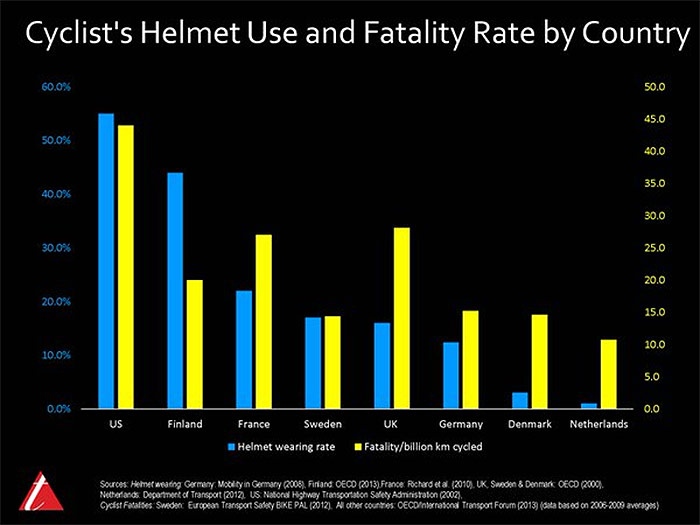 Better street design and getting more people on bikes—not blind faith in helmets—are the keys to making cycling safer, recent research has shown.
Better street design and getting more people on bikes—not blind faith in helmets—are the keys to making cycling safer, recent research has shown.
Want a good visual to get the point across? The Toole Design Group made this for you.
Of these countries, the United States has the highest rate of helmet usage among cyclists —around 55 percent—but also the highest cyclist fatality rate per distance traveled. Meanwhile, in the Netherlands, where helmet use is practically nil, cycling is much, much safer.
While this is just eight data points, higher helmet use seems to be associated with higher fatality rates. Intuitively, that makes some sense. The more dangerous an activity, the more people feel inclined to take steps to protect themselves.
Despite the high rate of helmet use in the U.S., helmet campaigns have clearly failed to make cycling as safe as it should be. If anything, they’ve distracted from the much more important work of designing safer streets and reducing motor vehicle speeds in cities.
[Editor’s Note: This article has been cross-posted from our partner, Streetsblog. We’re not here to recommend people not wear a bike helmet if they want to or feel it will improve their safety—especially for children. But as we discuss street safety in Louisville, it’s important to recognize that bike helmets don’t necessarily mean safety. Better street design with slower moving traffic improves safety. As this article points out, pushing bike helmets (and reflective clothing) can distract from the bigger picture of safer streets.]


